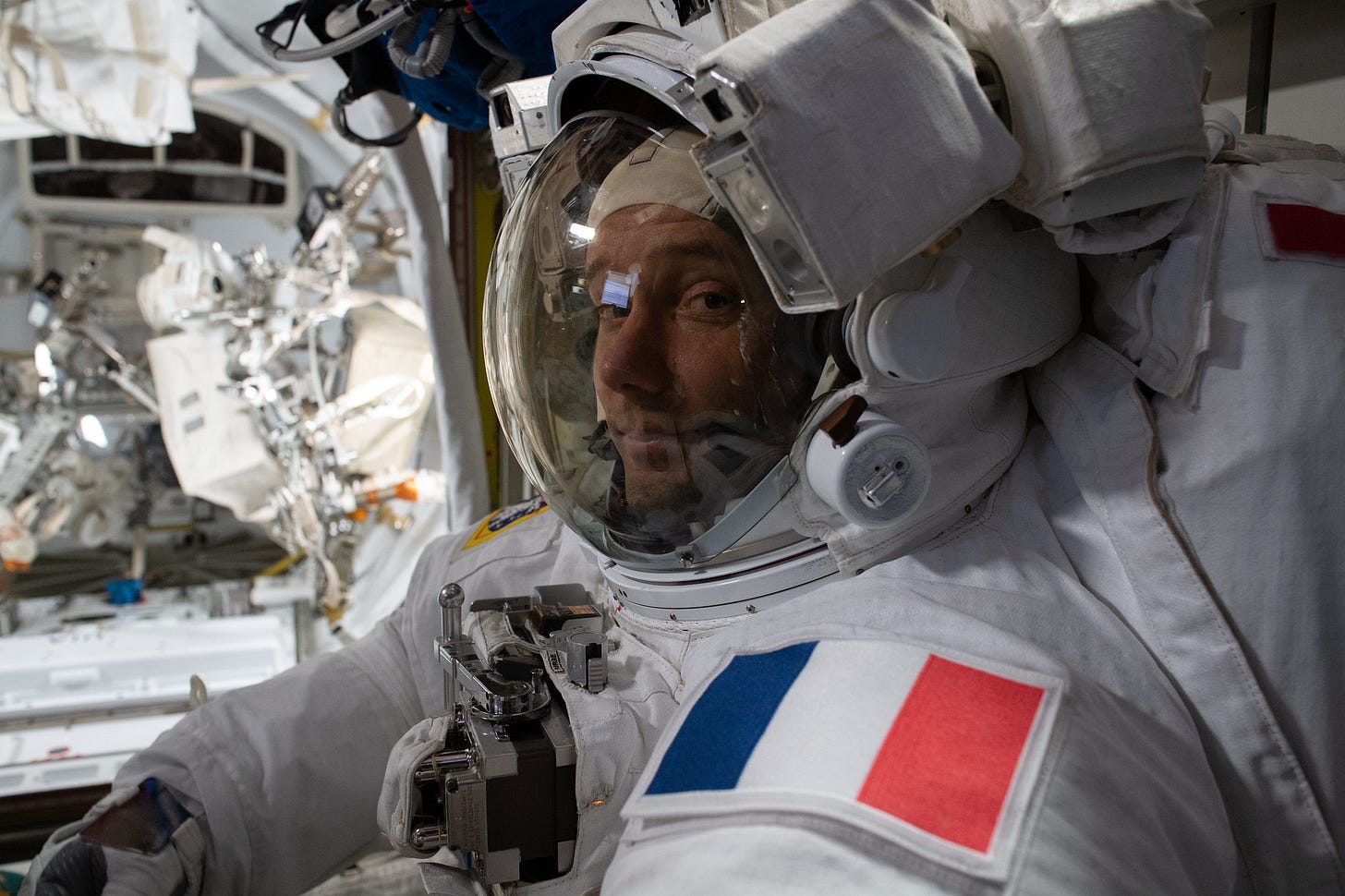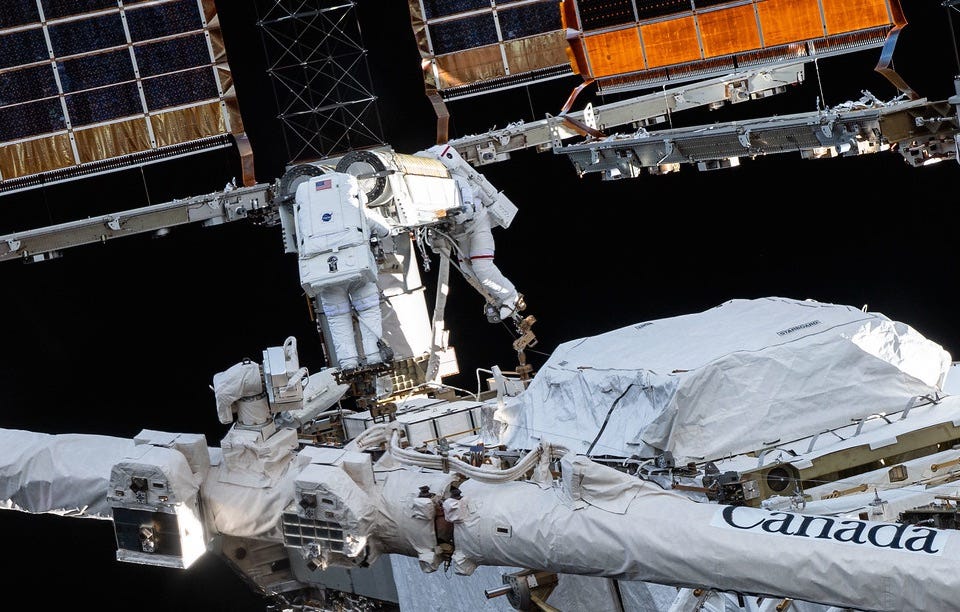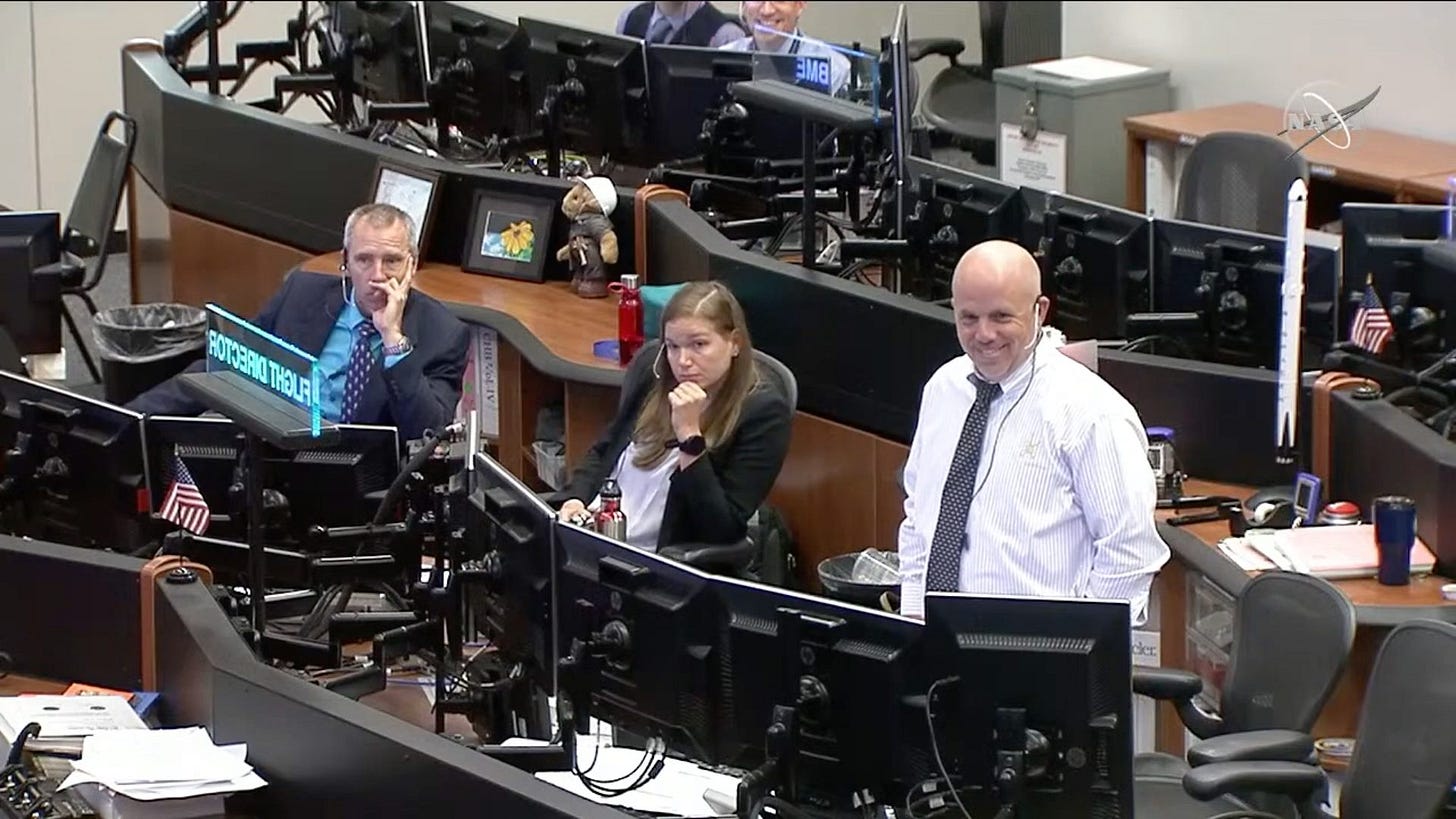Call it “Home Improvement” in space. It’s a boost of electrical service for the International Space Station that we earthlings can actually see (check out photo at the end of the story).
In what some call “technically challenging” spacewalks, astronauts are rolling out a “carpet” of new, smaller solar arrays that contain cutting-edge technology and pack more electrical punch. These new arrays should boost the current capacity by 30%.
The attention-getter is that these arrays, made up of glass solar cells, arrive at the station rolled up. Once set in place on one of the station’s trusses they roll out to start capturing the sun’s energy.

European Space Agency Astronaut Thomas Pesquet in his EMU for one of three spacewalks. (Photo Credit: NASA)
Astronauts Shane Kimbrough and Thomas Pesquet just completed three spacewalks to roll out two of the six arrays that will ultimately help power the station. “It is beautiful,” Pesquet, a French astronaut with the European Space Agency, commented as the first array unrolled.

Astronauts working on new solar arrays during one of three spacewalks. First array in upper right corner. (Photo Credit: NASA)
"YOUR BABY"
Watching anxiously on the ground, the teams at NASA and Boeing that put the technology together.
“Basically eight hours of just gut wrenching and you just watching… it's exhilarating. But just sat there on pins and needles,” said Rick Golden who heads Boeing’s Space Station structural upgrade program.

Stage separation of SpaceX Dragon capsule providing a view of the solar arrays and earth (Photo Credit: SpaceX)
Boeing was given the contract to build and integrate the new solar array system. The solar cells were built by Boeing subsidiary Spectrolab. The roll out mechanism was built by Redwire. The arrays were carried to the station in the unpressurized “trunk” of a SpaceX Dragon capsule, a rival of Boeing’s Starliner capsule. There was a great view of those arrays during launch.

Boeing project manager for IROSA solar arrays (Photo Credit: Boeing)
All that was on Rick Golden’s mind as he watched the astronauts was “will it work?” “And so it rolls and … it's exhilarating,” exclaims Golden who has been on the project since its start 3 years ago. A self-described “rocket scientist,” Golden was proud to “kind of see your baby get born and grow up and… go off on its own… it was wonderful.”
ROLL OUT POWER
The 6 new arrays are twice as powerful and about half the size of the older arrays that have become less efficient with age. The 30% of additional electricity from the new “IROSA” arrays (International Space Station Roll-out Solar Arrays) will return the station to the level when the old panels were installed two decades ago. When deployed the new panels shade about half of the older version, which will continue to contribute power to the station. The IROSA’s are installed in pairs. Four more will be rolled out in the future. Together the new arrays will provide enough electricity that on earth would power 40 homes.

Watching the installation of the IROSA solar arrays at Mission Control at Johnson Space center in Houston. Pictured from left are-Astronaut Drew Feustel, Astronaut Jenni Sidey-Gibbons, and Flight Director Ron Spencer. (Photo Credit: NASA)
These arrays are important for another reason. Versions of the ROSAs will also be going to the moon to help power NASA's planned Gateway orbiting outpost. They could also be deployed on of the surface of the moon.
(Nasa video animation of spacewalk procedures)
Astronaut Kimbrough called the spacewalks to deploy the solar arrays “very challenging” and “very complex.” Golden too was concerned about astronauts because the arrays are “basically glass” and contain a certain amount of stored energy in the system which allows them to unroll.
(ESA music video of spacewalk to deploy IROSA solar panels)
YOU CAN SEE THEM
The small packaging of the arrays and their unique rollout is what Golden calls “elegant” engineering. “It's just kind of an engineering marvel some of the things we do, mainly because it wasn't designed this way. And so you're kind of retrofitting your house,” Golden explained. More panels and more spacewalks are coming to power the ISS.
There is a bonus to this installation for those who have the right equipment-telescopes. The new solar equipment on the station is visible to us earthlings. “That's kind of a cool tidbit. Because a lot of people trace the station and watch it go over. And here's an upgrade that you can actually see. And that's exciting to me,” says the rocket scientist who helped bring more power to the station.

The ISS with the sun as a backdrop taken by Alexander McCarthy. The new IROSA panels are visible on the right. (Photo Credit: @cosmic_background)



